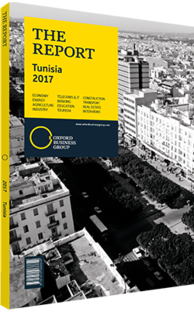Tunisian pharmaceutical companies eye new export markets
More than 30 years after Tunisia became one of the first countries in the region to establish a pharmaceuticals industry, the sector boasts nearly 40 production units for human medicine and six for animal medicine. According to a 2014 report by the World Bank, between 2000 and 2013 the industry grew at an average rate of 15%, significantly above the global average. Enjoying steady expansion at home, Tunisia’s pharmaceuticals industry is increasingly looking to leverage its competitive manufacturing position to tap into new export markets, particularly in francophone African countries.
Structure & Players
According to the World Health Organisation (WHO), Tunisia’s pharmaceuticals industry generated $745m in 2015, with local production accounting for 60% of the domestic market’s needs in terms of volume and 47% in terms of value. As of 2014, Tunisia had 39 local pharmaceuticals manufacturing companies, primarily operating as joint ventures with international firms. In an effort to reduce health care costs and increase access to medicine, Tunisia has sought to encourage the production of generic drugs. These currently account for two-thirds of local production, with the remainder being licensed medication.
With a turnover of TD90m (€38.6m), public pharmaceuticals company Adwya is a key player in the industry, accounting for around 15% of output and holding 7.7% of market share. Meeting 10% gof market demand, the Society of Pharmaceuticals Industries of Tunisia is another large actor, accounting for 14% of output.
In 2016 local manufacturer Unité de Fabrication de Médicaments, known as Unimed, was behind one of the largest initial public offerings (IPOs) at the Tunis Stock Exchange, the first in the pharmaceuticals industry since 2007. The IPO – priced at TD11.80 (€5) per share for a market capitalisation of TD300m (€128.7m) – was over-subscribed 32.6 times, the highest ever recorded in the history of the Tunis Stock Exchange.
Roadmap
While the push for the privatisation of the industry, coupled with favourable exemptions on import duties and taxes in the 1990s, made the establishment of many of these companies possible, Tunisia’s pharmaceuticals industry remains largely constricted by the monopoly the Pharmacie Centrale has had over imports of pharmaceuticals products since the 1960s. Though this ensured price stability for consumers, local manufacturing units have seen their margins limited and found themselves at a disadvantage with regards to public tenders. Nonetheless, pending reforms and new public-private initiatives, the sector could see significant changes in the coming years. In 2015 the industry launched a public-private dialogue, an inclusive process to bring together stakeholders for the development of new policies to improve the regulatory framework.
Exports
To capitalise on its developed manufacturing base and its easy access to Africa and Europe, the industry is preparing to expand exports, particularly to West African and European markets. Among the companies investing to increase production capacity for exports is Société Arabe des Industries Pharmaceutiques (SAIPH). To this end, SAIPH’s board voted in May 2016 to increase the company’s capital by TD8m ($3.4m), bringing total added capital since 2015 to TD24m ($10.3m), according to local media reports. SAIPH is eyeing exports to neighbouring North African countries such as Libya, Algeria and Mauritania, as well as to countries in West Africa.
Other companies are looking to develop production capacity abroad to use as export platforms. “Some local firms are starting to manufacture medications in West Africa to limit the import cost for countries in the region,” Mohamed Chiheb Ben Rayana, director-general at the National Centre for Drug Control, told OBG. Tunisian manufacturer Teriak, for example, purchased the Cinpharm plant in Cameroon in late 2015, with a view to produce locally and export across Central Africa. At present, Tunisian exports of human medicine account for only 6% of local manufacturing, indicating that there is significant room for growth.
You have reached the limit of premium articles you can view for free.
Choose from the options below to purchase print or digital editions of our Reports. You can also purchase a website subscription giving you unlimited access to all of our Reports online for 12 months.
If you have already purchased this Report or have a website subscription, please login to continue.

